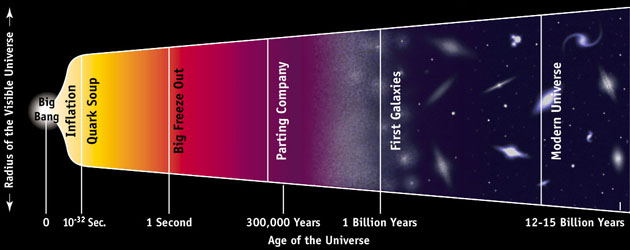We are used to living in a world of large, macroscopic things. Everything that the average person encounters during the day – from a cup of coffee in the morning to a huge ball of fire in the sky called the Sun – are things that we can either see or touch. However, even in Ancient Greece, philosophers, in particular Democritus and his teacher Leucippus, suggested that everything consists of the smallest indivisible particles – atoms.
Over time, the atom was discovered, and then its property that it is not at all indivisible, but consists of a nucleus and an electron rotating around it. Then it turned out that the nucleus also consists of protons and neutrons. Even later, quarks were discovered, of which the protons and neutrons of atomic nuclei are composed. These tiny particles are called elemental particles.
The Planck units – Mass, Temperature, Length, Time
In 1899 (in some sources – in 1900), the German physicist and part-time founder of quantum theory Max Planck proposed a special type of measurement – Planck units. These are units designed to simplify certain algebraic expressions found in theoretical physics, in particular in quantum mechanics.
These include such fundamental units as Planck mass, Planck temperature, Planck length, and Planck time. In this material, we will consider the Planck length and Planck time and try to do it in the most understandable way, without complicated mathematical calculations (although we will need some formulas).
What is Planck length?
As you already know, physics is concerned with the study of not only huge cosmic structures like galaxies and nebulae but also incredibly small phenomena on atomic and subatomic scales. However, there is another reality on a scale much smaller than what science has been able to study. At this level, there is a value that is so far beyond the traditional understanding of “small” that it is hard to imagine.
The Planck length is only 1.616 x 10 -35 meters. Max Planck first came to this remarkable unit after working on black body radiation and quantum mechanics. You’ve probably heard that this is the shortest possible length.
However, the Planck length is a scale at which physics is no longer capable of doing the same as mathematics. One of the most striking examples of such impossibilities is a movement with superluminal speed.
That is, on paper, you can apply force to a mass and accelerate it to the speed of light and higher, but we know that in nature this is simply physically impossible since the mass of an object (and therefore the energy required to accelerate it) increases infinitely. It turns out that we are not able to implement in reality everything that we can do on paper.
How does Planck length fit into physics?
So how does such a small quantity fit into physics? If two particles are separated by a Planck length or even less distance, then it is impossible to determine the positions of each of them. Moreover, any effects of quantum gravity on this scale (if any) are unknown to science, since there the space itself is not properly defined.
In a sense, we can say that even if we developed measurement methods that could “look” into these scales, we could never measure anything less, regardless of the further improvement of our methods and equipment.
Laws of physics in the Universe
According to the standard cosmological model, the universe was born as a result of the Big Bang, which began at an infinitely dense point. It is especially interesting that physicists and cosmologists have not the slightest idea what laws of physics prevailed in the Universe before it exceeded the Planck length in size, since there is still no confirmed theory of quantum gravity.
Nonetheless, this unit has proven useful in many different equations that have helped to compute and explore some of the most important mysteries of the universe.

For example, the Planck length is a key component in the Bekenstein-Hawking equation for calculating the entropy of a black hole. String theorists believe that it is on this scale that there are “vibrating” strings that make up the elementary particles of the Standard Model.
Whether string theory is correct or not, one thing is certain: in the quest for a unified theory of everything, understanding Planck length and the physics associated with it will play a key role.
What is Planck time?
What about Planck time? In a nutshell, the Planck time is the time it takes for light in a vacuum to travel the Planck length. Therefore, these two quantities are related. It is curious that to calculate the Planck time, you need Planck’s constant, gravitational constant, and the speed of light in a vacuum. The exact value of the Planck time is 5.391 x 10 -44 seconds, and it is calculated by the formula: t P = √ħG / c 5
Planck time is also called the quantum of time – the smallest time value that has any actual value. Smaller times are meaningless. Returning to theoretical hypotheses, string theorists assume that Planck-sized strings vibrate at a frequency corresponding to Planck time.
Opinions in the scientific community
In 2003, when analyzing images of the Deep Field from the Hubble telescope, some scientists expressed assumptions that if space-time fluctuations were present on the Planck scale, then images of very distant objects would be blurry.
The Hubble images, they argued, were too accurate, which, according to experts, called into question the concept of the Planck scale. Other members of the scientific community disagreed with this assumption, noting that such fluctuations would be too small to be observed. In addition, it was suggested that the expected blur was removed by the large size of objects in the images.
Planck length and time – where modern physics cease to make any sense
So, the Planck length and the associated Planck time determine the scale at which modern physical theories stop working. All the space-time geometry predicted by the General theory of relativity ceases to make any sense.
These scales store a still undiscovered theory that combines General Relativity and quantum mechanics, which can most fully describe the laws of physics. In fact, it is for this reason that modern descriptions of the development of the Universe begin only 5.391 x 10 -44 seconds after the Big Bang when the Universe was 1.616 x 10 -35 meters in size.
Join the discussion and participate in awesome giveaways in our mobile Telegram group. Join Curiosmos on Telegram Today. t.me/Curiosmos
Sources:
• Baez, J. (n.d.). The Planck length. The Planck Length.
• Flowers, J. L., & Petley, B. W. (2008, January 17). Planck, units, and Modern Metrology. Wiley Online Library.
• Futurism. (2014, April 3). Planck length: The smallest possible length. Futurism.
• Macleod, M. J. (2018, July 26). Programming Planck units from a virtual electron: A simulation hypothesis – the European Physical Journal Plus. SpringerLink.
• May, A. (2022, January 6). What is the planck time? Space.com.
• Meschini, D. (2006, September 26). Planck-scale physics: Facts and beliefs – foundations of Science. SpringerLink.
• Sapar, A. (1977, January 1). Evidence for the fundamental role of Planck units in cosmology. Publ. Tartu. Astrofiz. Obs.; (USSR).
• The University New South Wales. (n.d.). The planck scale: Relativity meets Quantum Mechanics meets gravity.











